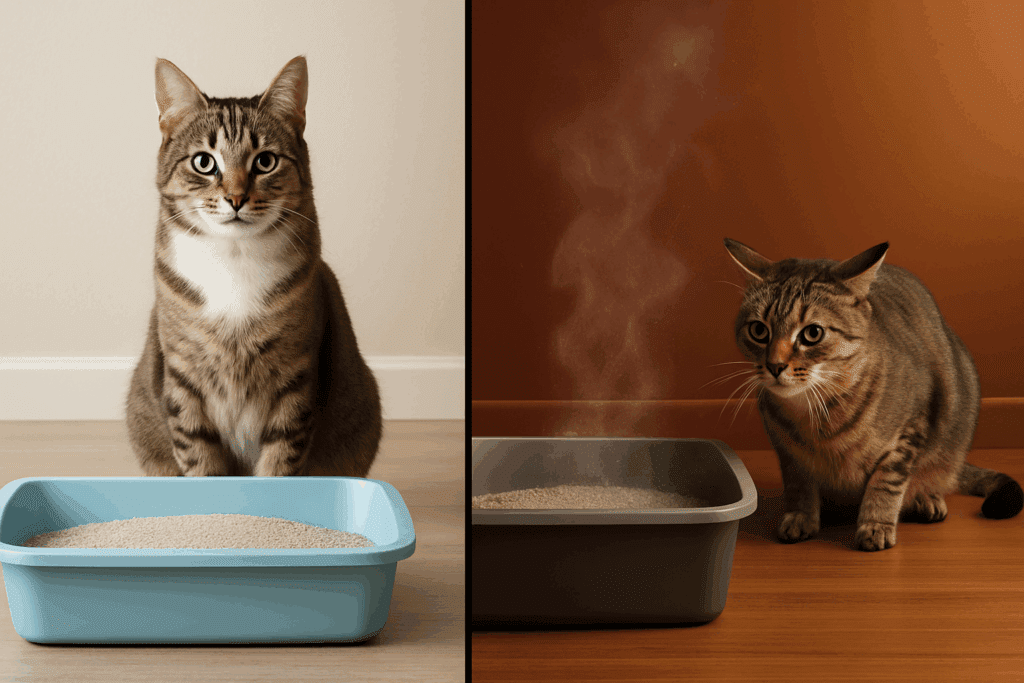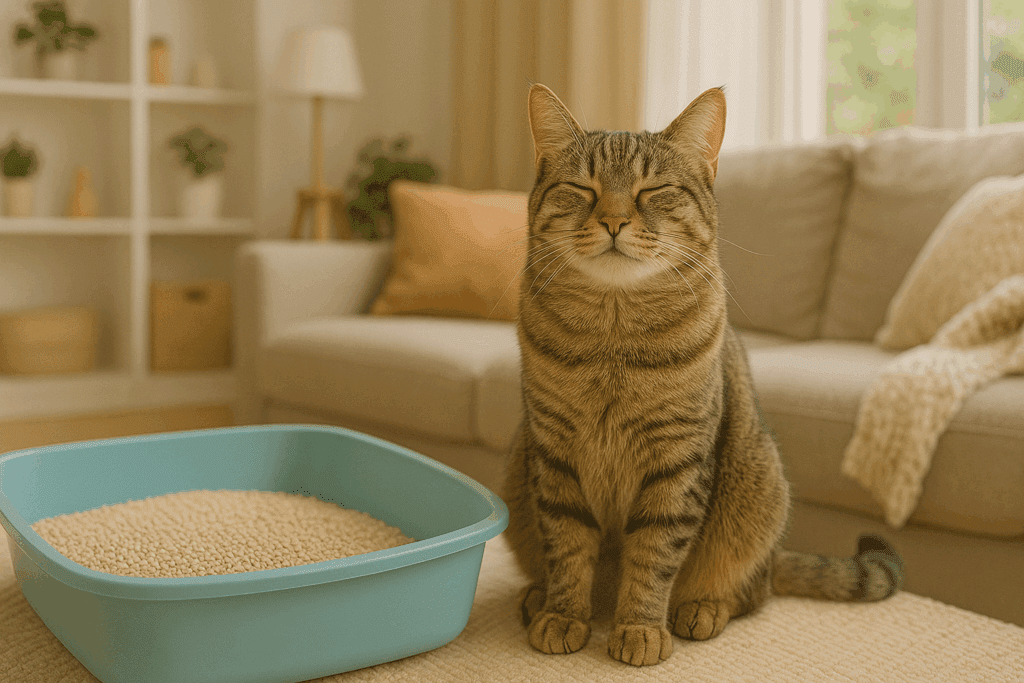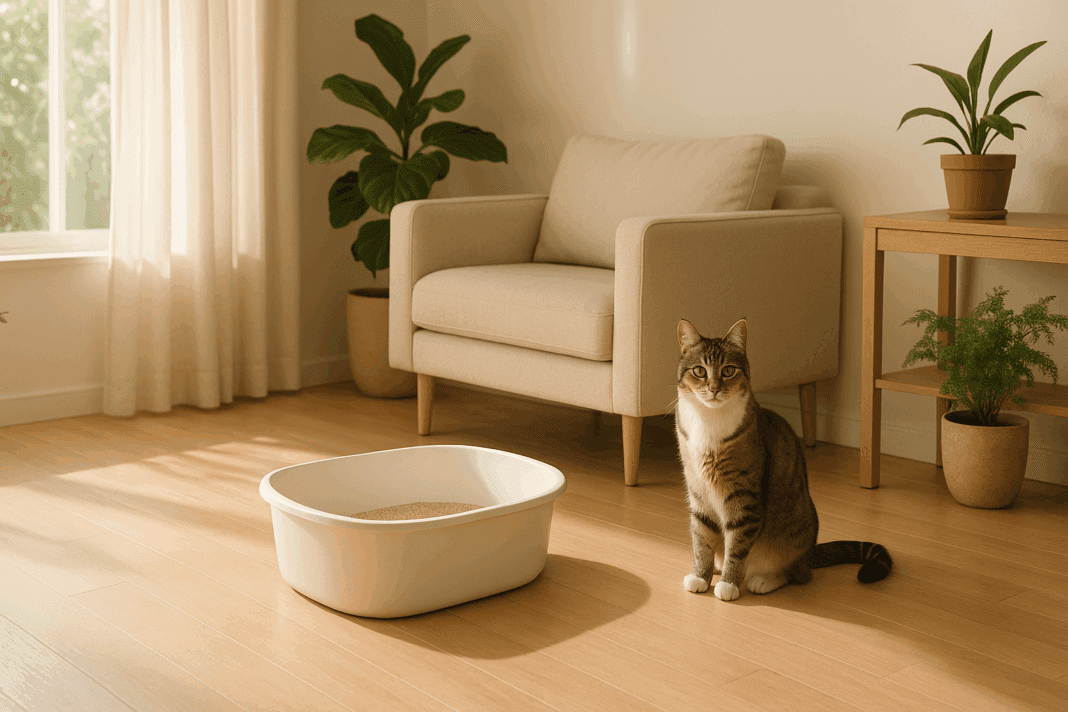Artificial scents in cat litter can trigger allergies in even the healthiest cats. This article discusses Dr. Elsey’s research on the link between scented litter and feline allergic reactions. Learn how hypoallergenic litter products are designed to protect cats from sneezing fits, itchy skin, and other allergic responses while maintaining optimal cleanliness.
For many cat owners, choosing the right cat litter comes down to two main factors: odor control and cleanliness. It’s not surprising then that many cat litters on the market come with added scents to help mask odors. However, while these scented litters may seem like an appealing solution to a stinky litter box, they can pose serious risks to cats. Feline health experts and veterinarians have raised concerns over the growing use of artificial fragrances in cat litter, pointing to the harmful effects on cats’ delicate respiratory systems and their tendency to develop allergies. This article explores the dangers of scented cat litter, how it impacts feline health, and why hypoallergenic litter may be a safer, healthier choice for both cats and their owners.

The Delicate Respiratory Systems of Cats
Cats’ respiratory systems are much more sensitive than those of humans. This heightened sensitivity makes them vulnerable to various environmental irritants, including dust, pollen, and artificial fragrances commonly found in household products. When exposed to these substances, a cat’s respiratory tract can become inflamed, leading to symptoms such as sneezing, coughing, wheezing, and even asthma.
Scented cat litter contains chemicals and synthetic fragrances designed to mask odors, but these scents can easily irritate a cat’s respiratory system. Many fragrances used in commercial cat litter contain volatile organic compounds (VOCs), which release harmful chemicals into the air. Prolonged exposure to VOCs can cause breathing difficulties, cat allergies, and, in severe cases, chronic respiratory conditions.
Cats are especially at risk because they spend significant time close to their litter boxes, and the dust and fragrance particles from scented litter can easily become airborne and inhaled. Kittens, elderly cats, and those with preexisting respiratory issues are particularly vulnerable.
The Rise of Cat Allergies
In recent years, there has been a noticeable increase in the number of cats suffering from allergies. While food and environmental allergies are often cited as common triggers, experts also emphasize the growing role that scented cat litter plays in aggravating or causing allergic reactions in cats.
The artificial scents in many cat litters are derived from synthetic chemicals, which can act as allergens when inhaled or when they come into contact with a cat’s skin. When exposed to these allergens, cats may experience a range of allergic symptoms, including:
Sneezing and nasal discharge
Itchy, watery eyes
Coughing and wheezing
Skin rashes or excessive itching
Inflammation of the paws and pads
The chemicals used to create artificial scents can be highly irritating to cats’ sensitive nasal passages and skin. Moreover, some cats may develop contact dermatitis, a skin condition that results from direct exposure to allergens found in scented litter. This condition manifests in redness, swelling, and itchiness, particularly on a cat’s paws, which are in frequent contact with the litter.

The Dangers of Scented Cat Litter
Beyond the risk of respiratory issues and cat allergies, scented cat litter may have several other negative consequences for your feline companion. These dangers range from behavioral changes to long-term health complications.
Disruption of Natural Behavior
Cats rely heavily on their sense of smell to navigate their world, and they are naturally clean animals that avoid environments that smell unpleasant or unfamiliar. The strong artificial scents in some litters can disrupt a cat’s natural behavior, making them avoid using the litter box altogether. When a cat’s scent is masked by a powerful fragrance, they may become confused or stressed, leading to house soiling (urinating or defecating outside the litter box).
This behavioral shift can create a significant challenge for cat owners and may even result in litter box aversion, a condition where a cat refuses to use its litter box due to environmental discomfort. Avoiding the litter box can often signal stress or physical discomfort, which can be exacerbated by the use of scented litter.
Toxic Ingredients in Scented Litter
Many scented litters contain chemicals that are not only harmful to cats but also to humans and the environment. Some of the toxic ingredients found in scented cat litter include:
Phthalates:
These are chemicals used to make fragrances last longer and are known to be endocrine disruptors. Phthalates have been linked to reproductive issues and developmental problems in animals.
Benzene and toluene:
These are VOCs often found in air fresheners and scented products. Prolonged exposure can lead to liver and kidney damage, respiratory issues, and even cancer in both cats and humans.
Artificial dyes:
Some scented litters use colored particles to make the product more visually appealing. However, artificial dyes may irritate a cat’s skin and digestive system if ingested during grooming.
The presence of these chemicals in scented litter could pose a direct risk to your cat’s health. When your cat digs or covers its waste in the litter box, it can inhale or ingest small amounts of these harmful substances, leading to potential long-term health consequences.
How To Choose the Right Cat Litter
When choosing a cat litter for your home, it’s essential to consider factors beyond odor control. Here are a few tips to help you select a safe and healthy litter for your feline companion:
Opt for Unscented Litter:
Avoid litters that contain artificial fragrances. Instead, choose unscented options, which are free from harmful chemicals.
Look for Low-Dust Formulas:
Dust can irritate a cat’s lungs, especially in closed spaces like a litter box. Select low-dust or dust-free litters to protect you and your cat’s respiratory health.
Consider Hypoallergenic Options:
If your cat has a history of allergies or sensitive skin, choose a hypoallergenic litter designed to minimize cat allergies.

Dr. Elsey’s Leadership in Cat Health
As a leading advocate for feline health, Dr. Elsey’s has conducted extensive research on the connection between cat litter and allergic reactions. The company has developed a range of hypoallergenic, unscented litters that are both safe for cats and environmentally friendly. These litters are also free from artificial fragrances, dyes, and harmful chemicals. The R&R® Respiratory Relief Litter, for instance, is designed to minimize airborne dust and allergens, providing a safe and comfortable environment for cats with respiratory sensitivities while promoting healthier breathing.
Dr. Elsey’s highlights the importance of cat litter in supporting a cat’s natural instincts and protecting its sensitive respiratory system. The company’s website offers valuable resources for cat owners, including information on litter choices, cat behavior, and health tips.
Protecting Your Cat’s Health
The risks associated with scented cat litter should not be ignored. From respiratory problems and cat allergies to behavioral changes and environmental damage, the dangers of using scented litter outweigh the temporary benefit of odor control. Cats rely on their keen sense of smell and their natural instincts to stay healthy and happy, and scented litter can interfere with these essential processes. Prioritizing the well-being of your feline friends through mindful litter selection is essential for maintaining both their health and a peaceful, harmonious home.
Was this article helpful? Don’t let it stop with you. Share it right now with someone who needs to see it—whether it’s a friend, a colleague, or your whole network. And if staying ahead on this topic matters to you, subscribe to this publication for the most up-to-date information. You’ll get the latest insights delivered straight to you—no searching, no missing out.
Further Reading:
1. A Study of Feline Upper Respiratory Tract Disease with Reference to Prevalence and Risk Factors for Infection with Feline Calicivirus and Feline Herpesvirus – Journal of Feline Medicine and Surgery
2. The feline skin microbiota: The bacteria inhabiting the skin of healthy and allergic cats – Plos One
3. Field assessment of cats’ litter box substrate preferences – Journal of Veterinary Behavior


